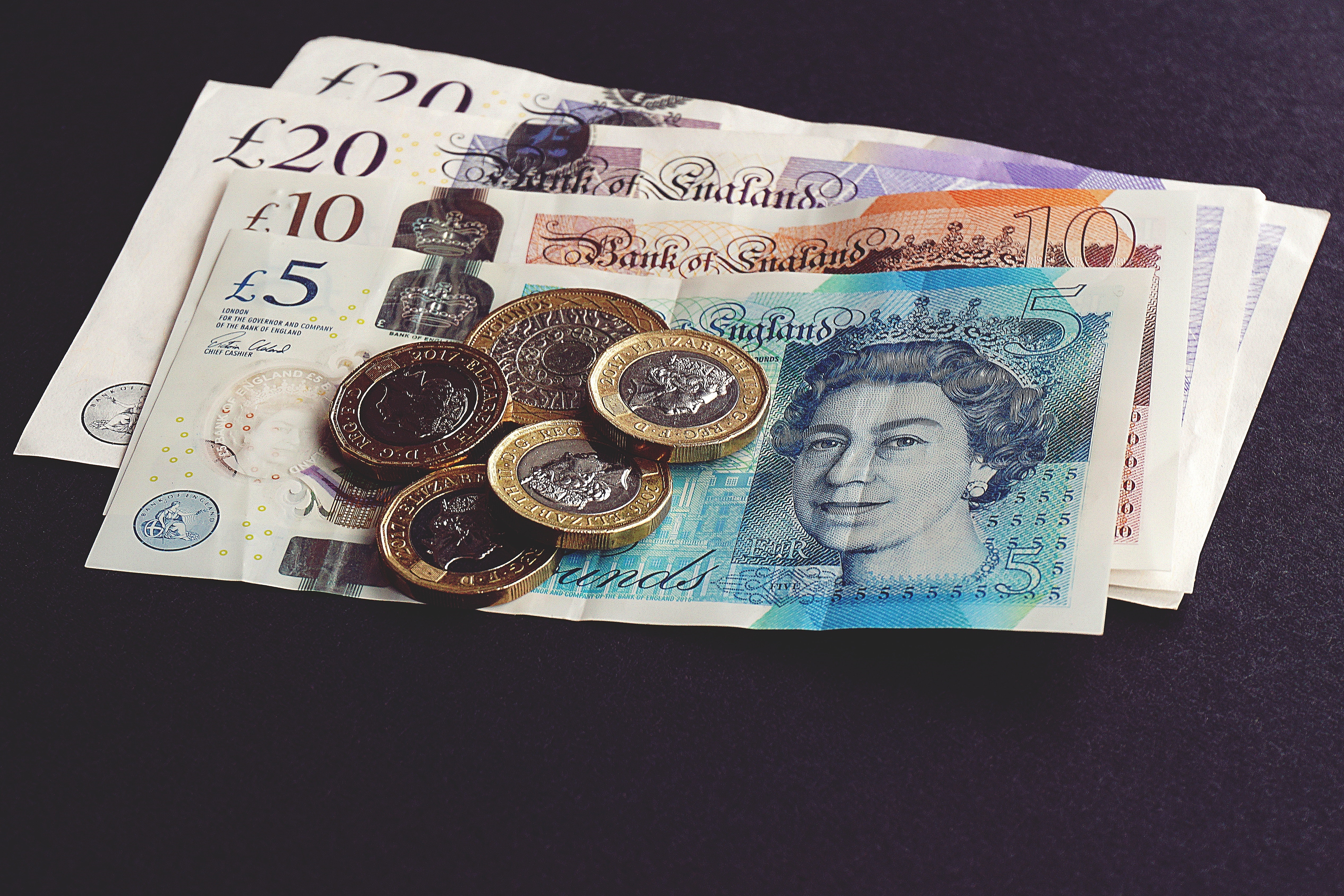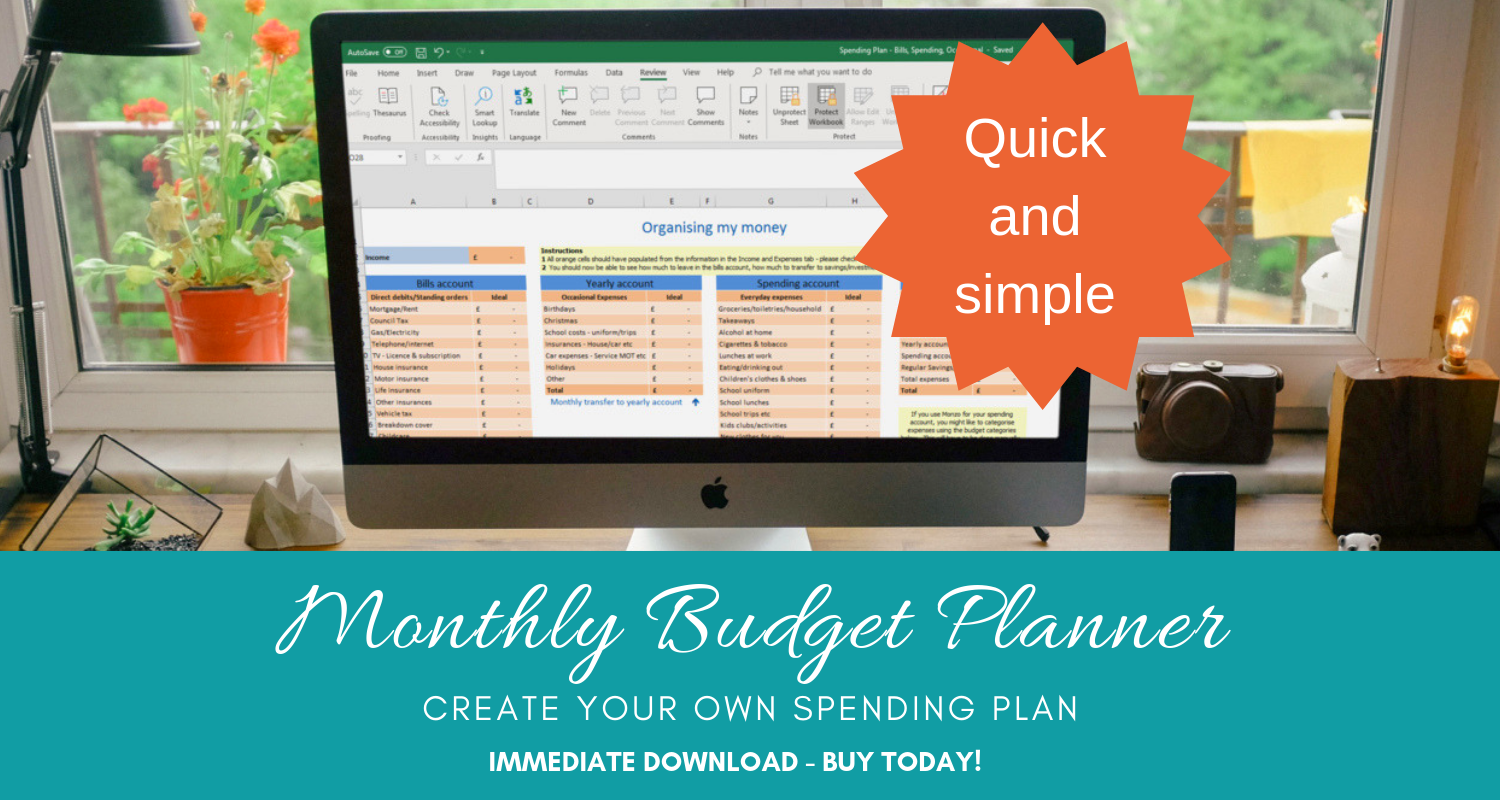Take a course!
- quickly reduce anxiety & begin to feel more confident with money
- implement simple systems, saving time & money with easy to follow money tips
- start paying off debt, build emergency savings & security
Start saving money today by learning how to budget effectively in 5 really simple steps which anyone can easily do, starting right now! But why bother? It seems too much like hard work! A budget (or spending plan if budget sounds too scary!) will help you to:
- Know exactly how much you have coming in
- Know how much your outgoings are
- Pay off debt, and stay out of debt
- Improve your credit rating, and secure cheaper borrowing
- Be prepared for unexpected events
- Reduce stress and improve wellbeing
- Reach your goals in life
- Be fully prepared and excited about retirement
How to budget in 5 simple steps
Let's just get started.
Step 1 - Sort paperwork

This task can seem daunting, especially if you have let the paperwork grow and grow, but it's necessary if you are to learn how to budget. To make it less of a chore, a work and reward system works well! I do this sitting by the stove, throwing the unnecessary paperwork straight in the stove and I reward myself with a couple of beers while I am doing it! (I know we shouldn't use alcohol as a reward, but sod it!!)
Quickly sort through the paperwork into 3 piles - keep, chuck and chuck later!
Keep - any current mortgage or loan agreements, insurance documents, bank statements (you will need them soon), important documents - passports, birth certificates, etc
Chuck - extra bits of paper, envelopes, old car, house insurance documents etc, bank statements over 5 years old
Chuck later - old mortgage or loan agreements, anything that you need to "do" - purchases to take back, refunds to claim etc, Don't throw this pile out until you have checked that you have claimed for everything possible - bank refunds, loan refunds etc.
Step 2 - Set up 2 current accounts
This is honestly life-changing and will stop you having to worry about when your direct debits come out of your account or whether you will have enough to pay the bills at the end of the month. In fact, once you have made your initial budget, it will stop you having to work out how to budget ever again!
Use one current account for bills and another for spending.
Work out how much you need in the "bills" account. This can be all your direct debits and standing orders, including regular savings, but you might like to also add regular expenses, such as school dinners or children's activities that might be paid weekly or termly.
Then leave enough in that account (plus an extra wee bit) to cover all these expenses.
Simply transfer what is left into the spending account. You can relax, knowing that all your bills for the month will be paid, and you know exactly how much you have available to spend for the rest of the month. You can read more about this method here.
Step 3 - Make the budget

Working out exactly how much is coming in and going out each month is vital to being able to learn how to budget like a pro.
This spreadsheet will help you to ensure that you don't forget about any of your income or expenses.
Grab 3 month's worth of bank statements and add the standing orders and direct debits. Then work out an average monthly spend for expenses such as grocery shopping, clothes shopping, and nights out. This will help you to work out how much you need to leave in the bills account, and how much you can transfer to the spending account. If the figures don' t add up, and you are spending more than you are earning, then you need to look at increasing your income or decreasing your expenditure.
Step 4 - Start saving for things that matter
If you love holidays, Christmas or weekends away with the girls, but find that they always break the bank, then start a simple savings fund for them.

That way you can prioritise these things that add to your life, over things that perhaps matter less. One way of doing this is to open a savings account and set up a standing order into it immediately after payday.
Another way of saving is by using Plum or Chip. These are fantastic wee apps, that squirrel money away without you really noticing!
I have saved over £1800 in a year, and it has felt like the easiest money I have ever saved. I have had a lovely weekend away with my hubby, paid for Christmas and still have some money in there to treat myself in the sales. It all feels free, because the money was already there!
Step 5 - Start saving for unexpected expenses

There is always something that crops up isn't there? Getting the car MOT'd ends up with a bill in the hundreds, the washing machine breaks down or yet another storm blows the trampoline over and makes a hole in the fence!
By having some money stashed away for these unexpected expenses, you can make all the difference. It can help you to avoid taking on bad debts and will help you to feel calm and in control of your finances.
Take action on this today and click here to join my FREE Emergency fund challenge
I hope that these 5 simple steps show you how easy it can be to create a budget, or spending plan, that will work for you and your family.
Eileen x
I’m taking part in the Monday Money linky with Lynn from Mrs Mummy Penny and Faith from Much More With Less










